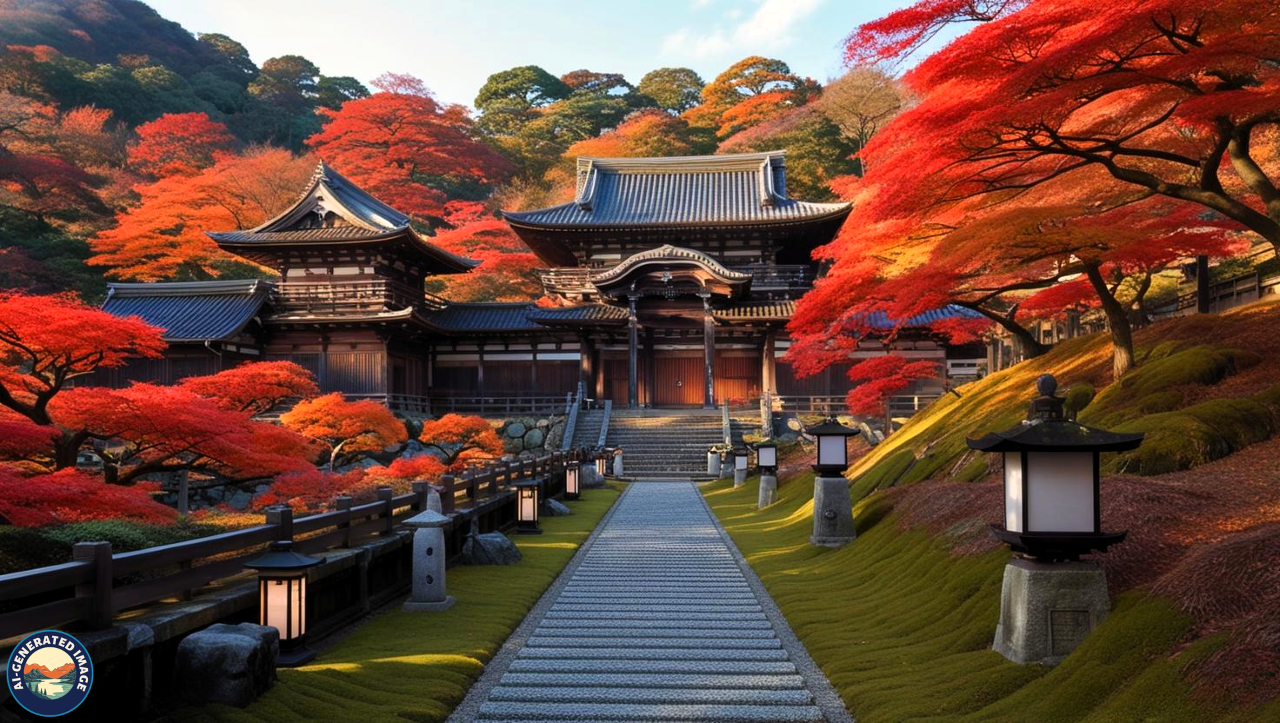Introduction
Kyoto stands as a beacon of Japan’s enduring cultural soul. Once the imperial capital, it’s a place where time-honored customs, ancient temples, and serene nature seamlessly merge. Walking through its narrow lanes lined with wooden houses, one feels transported to a bygone era, where rituals, elegance, and subtlety reign.
Kyoto offers a quiet yet profound immersion into centuries of spiritual, artistic, and culinary traditions for travelers seeking a deeper understanding of Japanese heritage. This article unveils the many layers of Kyoto, from its famed shrines to hidden corners steeped in charm.
Kyoto’s Historical Significance
Established in 794 as Heian-kyō, Kyoto served as Japan’s political and cultural heart for over a millennium. For more than a thousand years, it was home to emperors, scholars, and artisans who helped shape the nation’s identity.
This rich history is visible everywhere—from grand castles to humble teahouses. Unlike many cities, Kyoto emerged from World War II relatively unscathed, allowing its architectural treasures and cultural heritage to remain intact. Today, the city boasts 17 UNESCO World Heritage Sites and countless historic districts that preserve its ancient spirit.
Iconic Attractions
Fushimi Inari Shrine
Fushimi Inari is instantly recognizable for its long tunnels of crimson torii gates stretching up Mount Inari. This sacred site, dedicated to the deity of agriculture and business, draws both pilgrims and tourists with its peaceful trails and photogenic scenery.
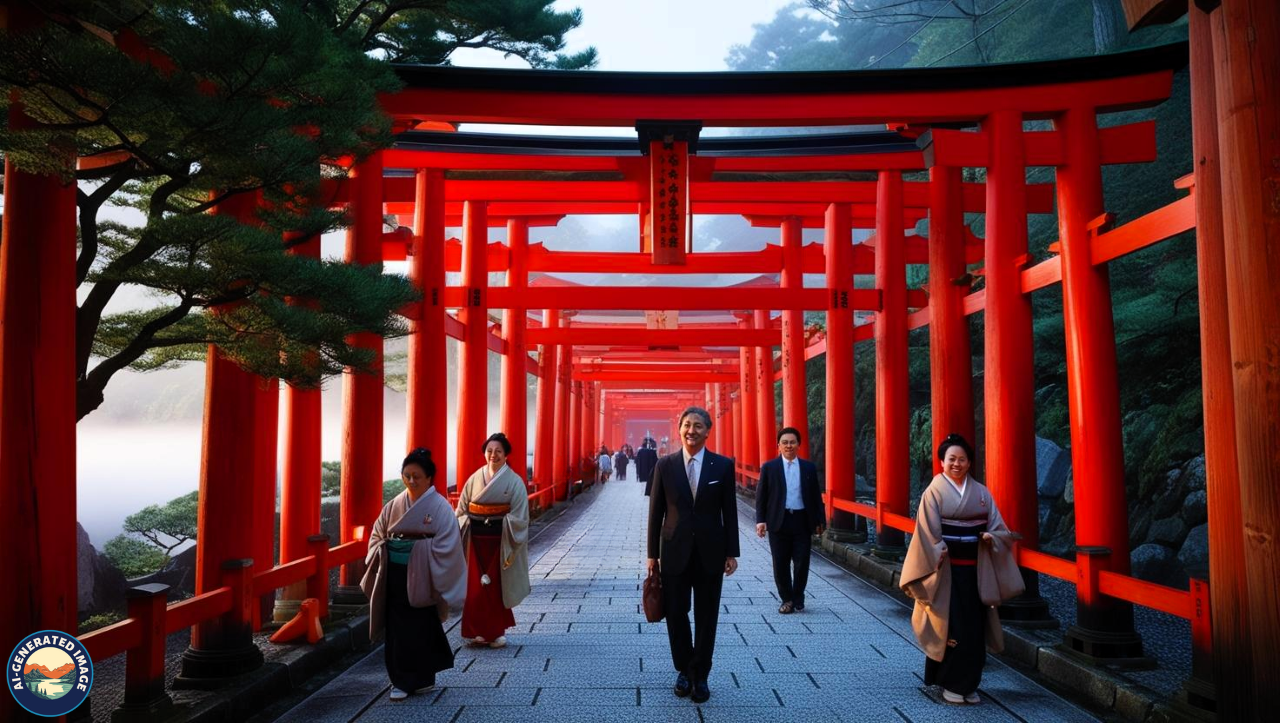
A walk through its forested paths, especially early in the morning, offers a reflective and almost mystical experience.
Kinkaku-ji (The Golden Pavilion)
Covered in shimmering gold leaf, Kinkaku-ji symbolizes Kyoto’s splendor. The Zen temple overlooks a calm pond that mirrors its golden façade, creating a dreamlike setting. Originally constructed as a retirement villa for a shogun, it became a temple after his death and continues to captivate visitors with its harmony and beauty.
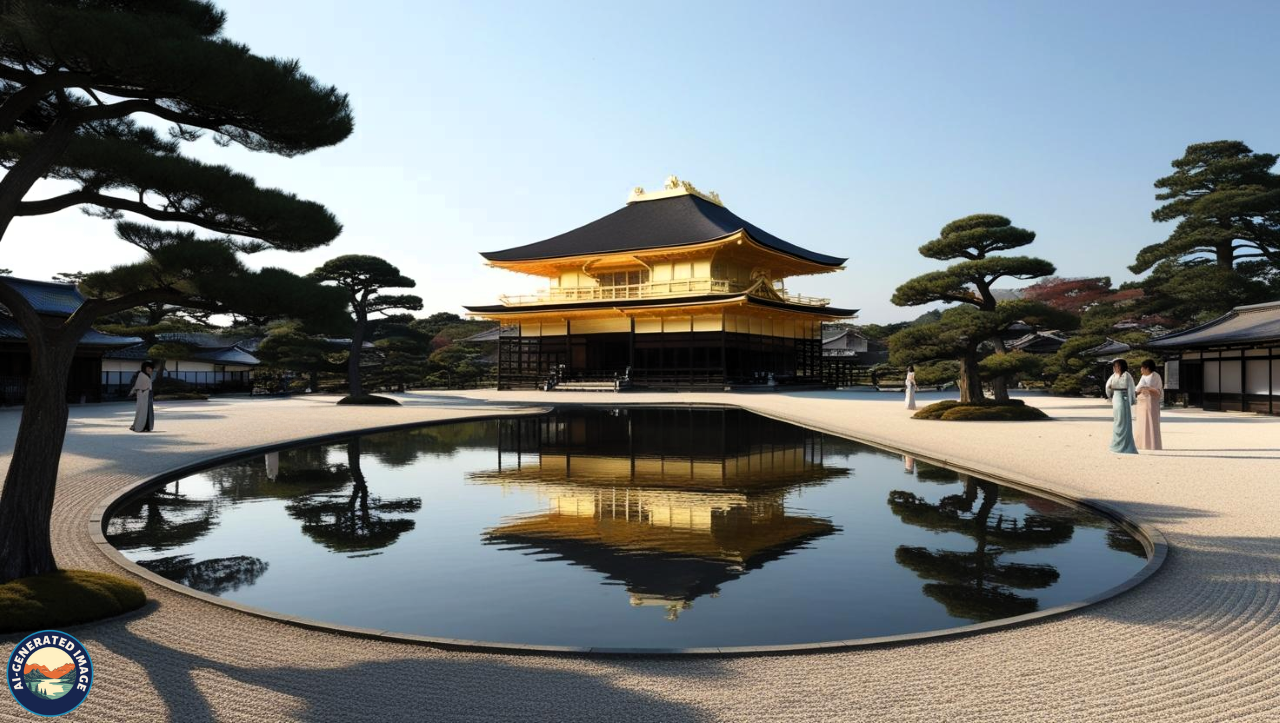
Gion – The Geisha District
Gion is Kyoto’s most famous historic neighborhood, where the traditions of geisha culture remain alive. With its preserved wooden architecture and ambient teahouses, Gion comes alive in the evenings, when you might catch a glimpse of a geisha or an apprentice maiko heading to an engagement.
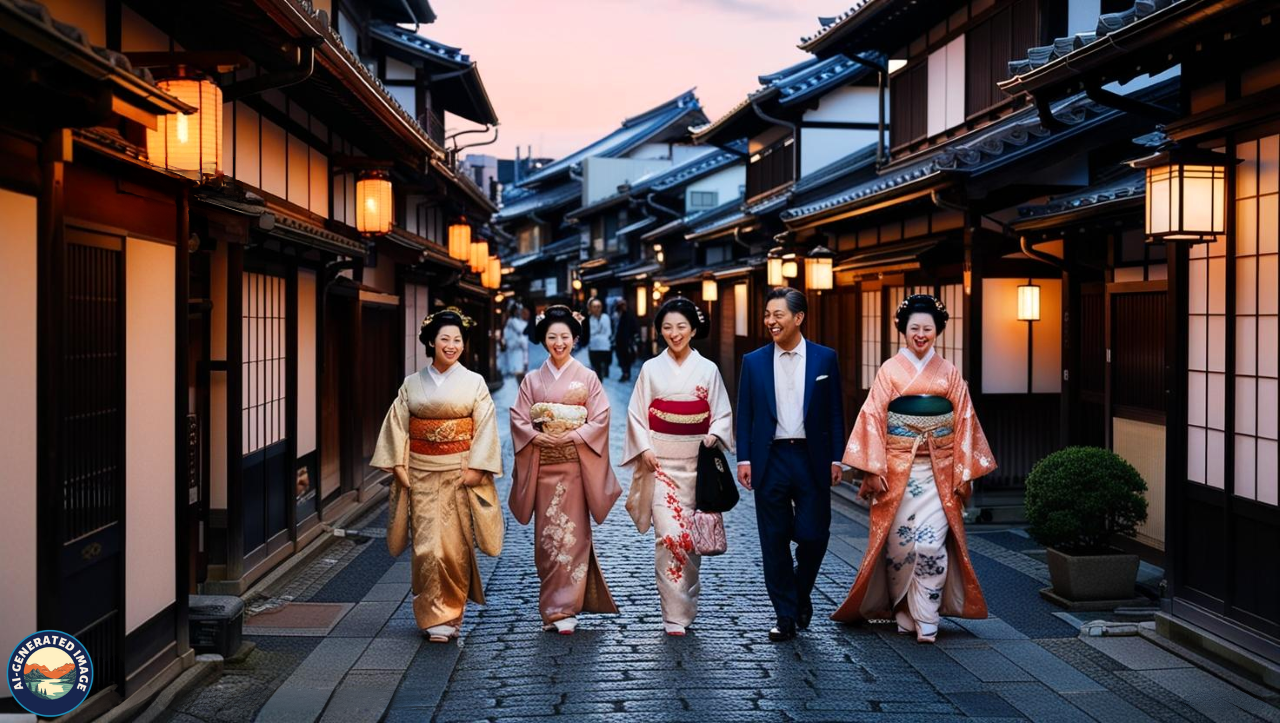
Even without a sighting, walking its lantern-lit streets is like stepping into a painting.
Arashiyama Bamboo Grove
In western Kyoto lies Arashiyama, home to a mesmerizing bamboo forest. The towering stalks swaying in the wind create an ethereal environment that calms the mind. Nearby, you’ll find the scenic Katsura River, the revered Tenryu-ji Temple, and a monkey park offering panoramic views of the city.
Kiyomizu-dera Temple
One of Kyoto’s most beloved temples, Kiyomizu-dera, is renowned for its grand wooden terrace that juts out over the hillside, offering sweeping views of the city. The temple’s name, meaning “pure water,” comes from the nearby Otowa Waterfall, where visitors drink from its three streams—each believed to grant a unique blessing.
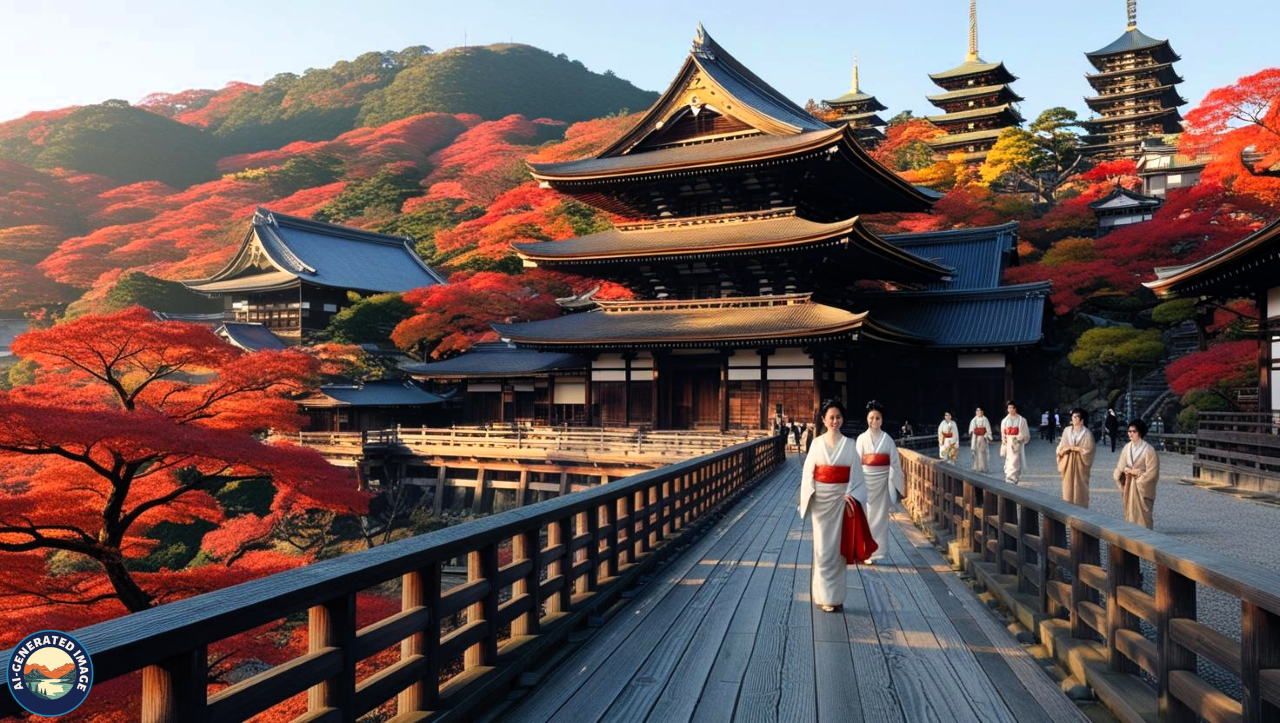
Nijo Castle
Built by shogun Tokugawa Ieyasu, Nijo Castle reflects the power and sophistication of the Edo period. The castle features intricate artwork, peaceful gardens, and famous “nightingale floors” designed to chirp when stepped on—an ancient security measure.

Cultural Immersions
The Art of the Tea Ceremony
Kyoto is the ideal place to witness or participate in the Japanese tea ceremony, known as sado. Rooted in Zen philosophy, this ceremony emphasizes mindfulness and graceful hospitality. Teahouses across the city, particularly in Gion and Higashiyama, offer serene settings for this unique ritual.
Dressing in a Kimono
Visitors love renting kimonos and strolling through Kyoto’s old districts. Shops provide full outfits and even hairstyling, making it easy to blend in with the historic surroundings. Photos in kimonos at temples or in the bamboo grove create beautiful, lasting memories.
Learning Traditional Arts
Engage with Kyoto’s cultural legacy by joining workshops in calligraphy (shodo), flower arranging (ikebana), or origami. These activities highlight the elegance and mindfulness found in Japanese aesthetic practices.
Geisha Experiences
For those curious about Kyoto’s geisha traditions, performances at Gion Corner offer an accessible introduction. Here, you can enjoy classical dance, court music, and theater in a single evening. Some ryokans or teahouses also provide private geisha entertainment with prior reservation.
Kyoto’s Culinary Offerings
Kaiseki Cuisine
Kaiseki is Kyoto’s version of fine dining—an art form where each course reflects the season. Meals are carefully curated for taste, presentation, and harmony, served in tranquil, often tatami-matted settings. Kaiseki is more than food; it’s a sensory journey through nature and time.
Nishiki Market
This bustling market street, often called “Kyoto’s pantry,” is a feast for the senses. Stretching over five blocks, it’s filled with vendors selling fresh seafood, pickles, sweets, and street snacks. It’s the perfect place to try unique local foods like yuba (tofu skin), matcha croquettes, or skewered mochi.
Matcha Everywhere
As the epicenter of Japan’s green tea culture, Kyoto offers matcha in every form imaginable—lattes, parfaits, soba noodles, cakes, and traditional sweets. Uji, just outside the city, produces some of the finest matcha in the country and is well worth a visit for tea lovers.
Temple-Inspired Vegetarian Fare
Near many temples, visitors can enjoy shojin ryori, a Buddhist vegetarian cuisine that emphasizes purity and balance. Simple ingredients like tofu, seasonal vegetables, and mountain herbs are prepared with care and intention.
Kyoto’s Seasonal Allure
Springtime Blossoms
From late March to early April, Kyoto’s cherry blossoms transform the city into a pastel paradise. The Philosopher’s Path, Maruyama Park, and the grounds of Heian Shrine are particularly popular for viewing the delicate flowers.
Night illuminations at temples during the sakura season add a magical touch to the city’s already romantic atmosphere.
Fiery Autumn Colors
In autumn, Kyoto’s hills and temple gardens are ablaze with crimson and gold. Some of the best places to experience fall foliage include Tofuku-ji Temple, Eikando Temple, and Kodaiji. The crisp air and smaller crowds make this season ideal for sightseeing.
Gardens and Natural Sanctuaries
Kyoto is filled with traditional gardens that embody Japanese landscaping principles. Whether it’s the stone garden of Ryoan-ji or the moss-laden beauty of Saiho-ji (the Moss Temple), each offers a peaceful retreat from the city’s bustle.
Nearby Excursions
Uji – The Matcha Capital
Located just south of Kyoto, Uji is renowned for its superior green tea and the picturesque Byodo-in Temple. Tea farms, historic teahouses, and museums provide a deep dive into Japan’s tea heritage.
Kurama and Kibune
North of Kyoto lie the charming mountain villages of Kurama and Kibune. Hike between the two through cedar forests, visit spiritual shrines, and enjoy a meal on platforms built over flowing streams during summer.
Nara – Home of the Giant Buddha
Less than an hour from Kyoto, Nara was Japan’s first permanent capital. Its massive bronze Buddha at Todai-ji Temple and the freely roaming deer in Nara Park make for an unforgettable day trip.
Lake Biwa – Nature and Relaxation
Just beyond Kyoto, in Shiga Prefecture, lies Lake Biwa, Japan’s largest lake. Ideal for cycling, kayaking, and quiet relaxation, it provides a refreshing escape from the city.
Travel Tips
-
When to Visit:
-
March to April (for cherry blossoms) and October to November (for autumn leaves) are the most beautiful seasons.
-
Transportation:
-
Kyoto’s bus system covers most attractions, but renting a bike is a great way to explore at your own pace.
-
Respectful Behavior:
-
Maintain silence in temples, remove shoes where indicated, and avoid photographing geisha without permission.
-
Language:
-
Basic English is understood in tourist areas, but learning a few Japanese phrases shows respect and can go a long way.
-
Currency:
-
Cash is still widely used. Have yen on hand, especially when visiting local shops and smaller eateries.
Responsible and Sustainable Travel
Kyoto’s popularity has brought both benefits and challenges. To help preserve its beauty and cultural integrity:
-
Visit lesser-known spots to reduce overtourism.
-
Support local artisans and traditional businesses.
-
Follow etiquette in cultural districts like Gion—no flash photography, and no touching or chasing geisha.
-
Minimize waste by carrying reusable items.
-
Be mindful of noise and crowding in sacred spaces.
Conclusion
Kyoto is not just a city—it’s an experience wrapped in stillness, tradition, and wonder. From its sacred shrines and seasonal gardens to its artistic rituals and culinary mastery, Kyoto invites visitors to slow down and connect with the essence of Japan.
Whether you’re sipping matcha by a koi pond or watching autumn leaves flutter across a temple path, Kyoto’s quiet elegance leaves an indelible mark on the soul. It is a place where the past lives vividly in the present, and where beauty reveals itself in the subtlest of forms.
FAQs
How many days do I need in Kyoto?
Plan at least 3 to 5 days to explore Kyoto’s major sights and enjoy cultural activities at a relaxed pace.
What makes Kyoto different from Tokyo?
Kyoto is deeply rooted in tradition and nature, while Tokyo is modern, fast-paced, and technology-driven.
When is the cherry blossom season in Kyoto?
Cherry blossoms usually peak between late March and early April, though this varies slightly each year.
Can I see a real geisha in Kyoto?
Yes, particularly in the Gion district. Book a performance or a guided cultural event for the best experience.
Are Kyoto’s temples free to visit?
Some temples are free, but many charge a small entrance fee (typically ¥300–¥600).
Is Kyoto suitable for solo travelers?
Absolutely. The city is safe, easy to navigate, and offers many peaceful, solo-friendly experiences like garden visits and temple walks.
What food should I try in Kyoto?
Don’t miss kaiseki meals, matcha desserts, tofu dishes, and street food at Nishiki Market.

